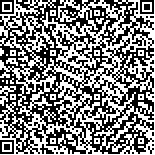下载中心
优秀审稿专家
优秀论文
相关链接
摘要

| 作者 | 单位 | |
| 巩丹超 | 解放军信息工程大学测绘学院 河南郑州45005 | |
| 张永生 | 解放军信息工程大学测绘学院,河南郑州45005 | zhangys@plaieu.cn |
| 邓雪清 | 解放军信息工程大学测绘学院,河南郑州45005 |
通过对线阵CCD推扫式影像和框幅式中心投影影像的核线理论的对比研究;建立了线阵CCD推扫式影像的核线理论;并探讨了它的基本特性;从而为核线在线阵CCD推扫式影像中的应用提供了理论基础。
In general, two or more images of a single scene are related by the so-called epipolar geometry. Since the epipolar geometry contains all geometric information that is necessary for establishing correspondence, it is commonly used for the extraction of three-dimensional information in computer vision, photogrammetry and remote sensing. The epipolar geometry means that a point (a) in the image is mapped to the point on the known linear line (epipolar line) or non-linear curve (epipolar curve) in the other image. In case of aerial and perspective imagery, the epipolar geometry is mathematically well founded and widely used in computer vision and aerial photogrammetry. It is told that the epipolar geometry of the linear push-broom sensor is different from that of the perspective one and that the epipolar geometry of perspective imagery cannot be applied to linear push-broom imagery. This paper addresses the epipolar geometry of linear push-broom imagery. Compared with the epipolar geometry of frame perspective images, we qualitatively analyze the epipolarity model of perspective and aerial imagery and propose an epipolarity model of linear push-broom sensor images. The proposed epipolarity model is a non-linear hyperbola curve, based on the approach of track of projection and depends on the sensor model of collinear equation. We discuss the pro- perties of epipolar curves of linear push-broom sensor images, experiment with a kind of classical linear push-broom sensor images: SPOT, draw a conclusion about the epipolar geometry of linear push-broom sensor images, and build the theoretical basis for the application of epipolar curves.

